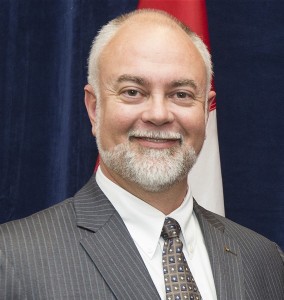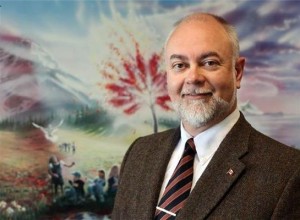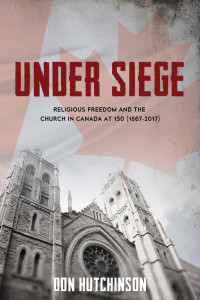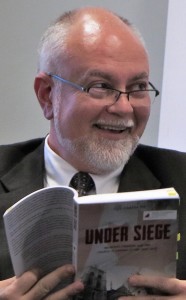Presentation for the National House of Prayer, January 20, 2021.
 Thank you for praying for our nation. And, thank you for inviting me to share briefly today about the possible implications that would result from passage of Bills C-6 and C-7.
Thank you for praying for our nation. And, thank you for inviting me to share briefly today about the possible implications that would result from passage of Bills C-6 and C-7.
I’ll begin by talking about context and the importance of the context in which both bills arise.
A Martin Luther King, Jr. quote that circulated widely this past MLK Day reads:
How does one determine whether a law is just or unjust? A just law is a man-made code that squares with the moral law or the law of God. An unjust law is a code that is out of harmony with the moral law.
This inspirational quote is often used to inspire the challenge of any law deemed by the user of the quote as unjust. It is most often quoted without context and out of context. King was committed to peaceful protest against segregationist laws. He was prepared to accept the consequences for his peaceful protest, whether or not the law was changed as a result. King wrote these sentences in his Letter from a Birmingham Jail where he was in custody on 16 April 1963. He would be dead within five years, without seeing the change he was seeking.
Why start there in a brief talk about two bills currently before Canada’s Parliament?
Because context is important.
Let’s turn our thoughts to the context in which Bills C-6 and C-7 exist.
First, we live in a free and democratic society. Please do not mistake claims that religious freedom is or may be limited as a targeted assault on the Church. Please do not mistake the imposition of a political agenda that differs from yours as the end of our democracy.
Christians in Canada’s free and democratic society have rights and freedoms that exceed those found in many countries around the world. The challenge is to use our freedom wisely.
Second, the culture in which we live has been moving away from Judeo-Christian influence for well over half a century. Following the Second World War people left the Church disillusioned with a God who allowed two world wars and a depression during their lifetimes. They also succumbed to the developing distractions of 1) the automobile, with the allure of a Sunday drive at the end of a six day workweek, and 2) the television, which offered remote church in the morning and The Wonderful World of Disney in technicolour at 6:00 p.m.
One manifestation of rejecting the Church’s influence was the sexual revolution, which churns its wheels forward to this day. Slogans of the sexual revolution apply to sexual preferences, abortion, and more recently end-of-life decisions. “My body. My choice.”
Another manifestation was the shift in the language of human rights. Long before 1982’s Canadian Charter of Rights and Freedoms, the 1947 United Nations’ Universal Declaration of Human Rights and the increasing influence of American media were pushing Canadians culturally toward the pursuit of personal gratification and away from considerations of societal responsibility.
The Canadian Church has been wrestling with its place in society and its understanding, misunderstanding, and revised understanding, of the Bible since the 1960s.
Which brings me to my third point. The Bible.
Despite its devaluation by the broader culture, the Bible remains true from Genesis 1:1 to Revelation 22:21. God has not changed. God’s Word has not changed.
All 27 books of the New Testament were written in the context of a Church experiencing persecution. The persecution started with people in culture rejecting Christians because of their claim that Jesus of Nazareth was the Messiah. The persecution extended to government action because of cultural influence and because of the Christian claim that Jesus was the only King to whom they would bow.
We cannot disregard that history or the experience of persecuted Christians in nations around the world today. Canadian Christians cannot confine select passages of Scripture to the first-century and import others we like better into the twenty-first. Jesus said,
Blessed are the peacemakers, for they will be called children of God. Blessed are those who are persecuted because of righteousness, for theirs is the kingdom of heaven.
Blessed are you when people insult you, persecute you and falsely say all kinds of evil against you because of me. Rejoice and be glad, because great is your reward in heaven, for in the same way they persecuted the prophets who were before you. (Matthew 5:9-11 NIV)
Jesus also said,
Behold, I am sending you out as sheep in the midst of wolves, so be wise as serpents and innocent as doves. Beware of men, for they will deliver you over to courts… and you will be dragged before governors and kings for my sake, to bear witness. (Matthew 10:16-18, ESV)
Let’s consider Bills C-6 and C-7 in the context of democratic rights, claims to personal autonomy, and the Bible.
In our democracy every Canadian is equally placed to pursue the development, amendment or elimination of laws through elected legislatures and through the courts.
Bill C-7, medical assistance in dying, is the result of people pursuing their understanding of constitutional rights in the courts. Existing law was upheld in 1993[1] then overturned in 2015,[2] and Parliament decided to accept the direction of the courts.
Parliament has the constitutional authority to reject such decisions by the courts but has not.
The decision of the Supreme Court of Canada in the Carter case in 2015 cut against established Biblical, traditional, and legal understandings of the sanctity of human life and murder. But, the decision was accepted by the government as the direction of and for culture. The law shifted.
In 2016, Bill C-14 presented a legally conservative interpretation of the court’s direction.
The Trudeau Government’s decision not to appeal the overturning of C-14 in the 2019 Truchon[3] decision of a single judge of the Quebec Superior Court was puzzling. I don’t recall another instance where a government passed a law and the same government did not fight for that law to be upheld when it was challenged in court.
As citizens, we are constitutionally empowered to intercede on Bill C-7 through submissions to Parliament, in this instance the Senate where the bill is now being studied, and in the public square. The wise as serpents and innocent as doves personal presentations are perhaps best made by those whose lives and livelihoods may be most directly altered by the proposed changes to the law: those living with disabilities, and people employed in palliative care such as doctors, nurses and other caregivers. For those who submit to the governing authorities as directed by Paul in Romans 13:1-7[4] and by Peter in 1 Peter 2:13-17[5], public rallies are effectively proscribed due to pandemic regulations.
As Christians, we take our right to intercede a step further because as citizens of heaven we are called to pray. That’s the directive Paul gave in 1 Timothy 2,[6] to pray for our leaders that we might live in peace.
If C-7 becomes law with its current scope, and because healthcare is constitutionally provincial jurisdiction,[7] if provincial governments and medical associations do not step in with action supportive of freedom of conscience and religion to exempt the unwilling from compulsory involvement in acts they consider unconscionable, we can anticipate:
- Costly court challenges;
- Public hospitals will offer MAiD before palliative care, as some are already doing;
- Palliative care facilities and practitioners will step away from their practices; and,
- Capable, intelligent students will choose careers other than medicine if the taking of human life becomes a mandatory part of their training.
Bill C-6 is said to be intended to address the issue of involuntary conversion therapy. The concern behind the bill arises out of sometimes torturous practices, in which some members of the Church participated. Good intentions are not deliberated when practices used are demonstrably harmful.
As drafted, C-6 is an insidious bill with unpredictable results. The current structure of the bill leaves it open to interpretation and application that goes beyond the stated purpose, potentially exposing voluntary, non-harmful counselling and spiritual guidance to risk of criminal prosecution. The failure of the Trudeau Government and the House of Commons’ Justice Committee to stipulate a precise definition for what is illegal implores us to continue to advocate and to pray for careful definition. If the definition of conversion therapy is not properly refined before the bill is passed, we can anticipate:
- Costly court challenges, inviting the courts to define or strike down the law. The Supreme Court of Canada has long held that “a law will be found unconstitutionally vague if it is so lacking in precision as not to give sufficient guidance for legal debate;”[8]
- Because of fear, a chill effect on the ability to find counsellors and even the seeking of voluntary counselling by those struggling with questions of sexual orientation, gender identity, and gender expression;
- A similar chill effect on availability of spiritual counselling and direction, negatively influencing religious freedom;
- Rumours and false stories about conversion therapy charges and imprisonments;
- Enforcement of the law that will likely be complaint driven, but will empower targeted complaints by extremist activists in the LGBT+ community; and,
- Perhaps most unpredictably, more municipalities and provinces will implement similarly vague prohibitions on conversion therapy because they lack the clarity of direction the federal government will have squandered the opportunity to provide.
For those who have a deep seated understanding of the sanctity of human life and a biblically informed appreciation for parents, children and sexuality, the proposals in C-6 and C-7 represent new unjust laws, out of harmony with the moral law of God.
But most Canadians have little interest in these bills. They are unconcerned about God and they do not perceive their personal rights or autonomy to be affected. For them, these are just new laws, being put in place to fit with the evolving cultural understanding of morality. C-7 mirrors the thought it is more humane to give a lethal injection to a dying pet than not to give one to a person who no longer desires to live. C-6 affirms that judging others’ sexual proclivities is no one else’s concern.
It took commitment, effort and time to convince Canadians to accept these ideas.
It will take commitment, effort, and time to influence the culture to believe otherwise.
[1] Rodriguez v. British Columbia (Attorney General), [1993] 3 S.C.R. 519.
[2] Carter v. Canada (Attorney General), 2015 SCC 5, [2015] 1 S.C.R. 331.
[3] Truchon c. Procureur général du Canada, 2019 QCCS 3792.
[4] Let every person be subject to the governing authorities. For there is no authority except from God, and those that exist have been instituted by God. 2 Therefore whoever resists the authorities resists what God has appointed, and those who resist will incur judgment. 3 For rulers are not a terror to good conduct, but to bad. Would you have no fear of the one who is in authority? Then do what is good, and you will receive his approval, 4 for he is God’s servant for your good. But if you do wrong, be afraid, for he does not bear the sword in vain. For he is the servant of God, an avenger who carries out God’s wrath on the wrongdoer. 5 Therefore one must be in subjection, not only to avoid God’s wrath but also for the sake of conscience. 6 For because of this you also pay taxes, for the authorities are ministers of God, attending to this very thing. 7 Pay to all what is owed to them: taxes to whom taxes are owed, revenue to whom revenue is owed, respect to whom respect is owed, honor to whom honor is owed. (Romans 13:1-7 ESV)
[5] Be subject for the Lord’s sake to every human institution, whether it be to the emperor as supreme, 14 or to governors as sent by him to punish those who do evil and to praise those who do good. 15 For this is the will of God, that by doing good you should put to silence the ignorance of foolish people. 16 Live as people who are free, not using your freedom as a cover-up for evil, but living as servants of God. 17 Honor everyone. Love the brotherhood. Fear God. Honor the emperor. (1 Peter 2:13-17 ESV)
[6] First of all, then, I urge that supplications, prayers, intercessions, and thanksgivings be made for all people, 2 for kings and all who are in high positions, that we may lead a peaceful and quiet life, godly and dignified in every way. 3 This is good, and it is pleasing in the sight of God our Savior. (1 Timothy 2:1-3 ESV)
[7] Constitution Act, 1867, section 92, subsection 7.
[8] R. v. Nova Scotia Pharmaceutical Society, [1992] 2 S.C.R. 606; Ontario v. Canadian Pacific Ltd., [1995] 2 S.C.R. 1031.


